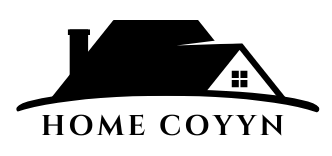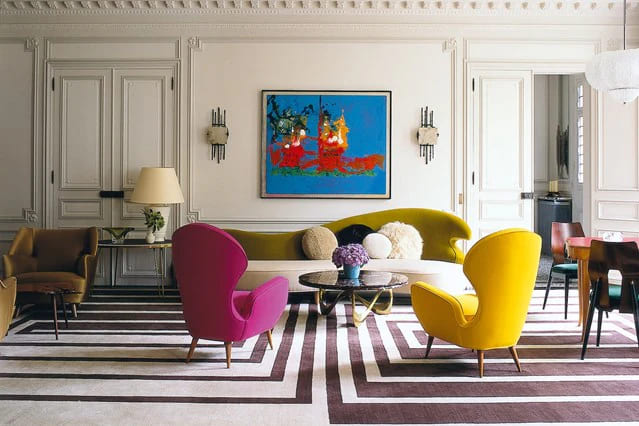Interior design is an art form that combines creativity, functionality, and visual appeal. A crucial concept often overlooked in this field is “opposition,” a design principle used to create contrast and dynamic spaces. By using opposing elements—such as light and dark, smooth and rough, or modern and classic—you can elevate a space from mundane to extraordinary. This article will guide you through the importance of opposition in interior design and provide practical tips to create a bold aesthetic.
What is Opposition in Interior Design?
Opposition in interior design refers to the use of contrasting elements to create visual interest. By placing opposing materials, textures, or colors side by side, designers can add depth and dimension to a space. The goal is to create tension, but in a harmonious way that adds excitement without overwhelming the senses. When done correctly, opposition can turn a simple room into a dynamic environment that captures attention.
Opposition works by drawing the eye to contrasting elements. For example, a room with smooth marble floors and rough stone walls instantly feels more dynamic because the two materials oppose each other in texture. Similarly, a minimalist space with a bold, colorful piece of artwork adds contrast that gives the room character.
Types of Opposition in Interior Design
Opposition in interior design can take many forms. Some of the most common types include:
| Type of Opposition | Description | Example |
|---|---|---|
| Color Opposition | The use of contrasting colors to create visual interest | A room with dark walls and light furniture |
| Texture Opposition | Mixing rough and smooth surfaces | A plush sofa next to a rustic wooden table |
| Shape Opposition | Combining geometric and organic shapes | A round coffee table with a square rug |
| Style Opposition | Mixing modern and traditional design elements | A contemporary chair in a vintage-styled room |
Each type of opposition has its own unique effect on the space. Understanding how to balance these elements is key to mastering opposition in interior design.
Benefits of Using Opposition in Interior Design
Opposition in interior design offers several advantages:
- Adds Depth and Dimension: Opposition makes a space feel more layered and complex, adding depth that draws people in.
- Creates Visual Interest: By incorporating opposing elements, the eye is naturally drawn to different parts of the room, keeping the viewer engaged.
- Expresses Personality: Using opposition allows you to showcase contrasting tastes, like blending antique furniture with modern art, for a more personalized space.
- Enhances Functionality: In some cases, opposition can serve a functional purpose, such as using light colors to make a small room feel larger while incorporating darker accents for contrast.
How to Incorporate Opposition in Interior Design
Now that we’ve covered the theory behind opposition, let’s explore how you can apply this principle in your own home or project.
- Contrast Light and Dark Colors: Start with a neutral base, such as white or beige walls, and introduce darker elements like black furniture or bold-colored accessories. The contrast between light and dark will make the room feel more dramatic and bold.
- Mix Textures: Don’t be afraid to play with different textures in one space. For example, combine soft, plush fabrics with hard, metallic surfaces. This creates a tactile opposition that invites people to touch and interact with the environment.
- Blend Old and New: One of the most striking ways to use opposition is by blending old and new design elements. An antique piece of furniture can be paired with modern art or contemporary lighting fixtures to create a bold contrast that feels both timeless and current.
- Use Opposing Shapes: Interior design often relies on symmetry, but incorporating opposition in shapes can add a layer of intrigue. For instance, a room full of square furniture can be softened by adding a round coffee table or mirror.
- Oppose Minimalism with Statement Pieces: If you prefer a minimalist style, you can still use opposition to make a statement. In a room filled with clean lines and neutral colors, introduce one bold, colorful piece—such as a bright red chair or a vibrant abstract painting—to create a striking contrast.
Examples of Opposition in Interior Design
Let’s take a look at how opposition has been successfully used in real-world interior design projects.
- Modern Industrial Spaces: Industrial design is known for its use of opposition, particularly in texture. Exposed brick walls juxtaposed with sleek, modern furniture create a dynamic, layered look. The roughness of the brick contrasts with the smoothness of modern materials like glass and steel.
- Scandinavian Interiors: Scandinavian design often combines minimalism with bold contrasts. Light wood floors and white walls are paired with black accents or bold art pieces. The opposition between the soft, natural tones and sharp, dark elements creates a balanced yet visually interesting space.
- Eclectic Homes: Eclectic interior design thrives on opposition. Mixing different styles, such as vintage furniture with modern art, or colorful patterns with neutral walls, adds personality and depth. The key is to ensure that the opposing elements still complement each other, creating harmony within the contrast.
Common Mistakes to Avoid When Using Opposition
While opposition can create a bold and engaging space, it’s essential to avoid overdoing it. Here are some common mistakes to watch out for:
- Too Much Contrast: While opposition is about creating contrast, too much can make a space feel disjointed or chaotic. Aim for balance by ensuring that the opposing elements still have something in common, such as color or material.
- Ignoring Functionality: Remember that interior design is not just about aesthetics; it’s also about functionality. Ensure that the opposing elements you choose work well together in terms of comfort and practicality.
- Lack of Cohesion: Opposition should enhance a room, not detract from it. Make sure the contrasting elements still fit within the overall design scheme, so the space feels cohesive rather than fragmented.
Conclusion
Opposition in interior design is a powerful tool for creating a bold aesthetic. By incorporating contrasting colors, textures, shapes, and styles, you can add depth, dimension, and personality to any space. Whether you’re designing a modern industrial loft or a cozy eclectic home, opposition can help you create a visually striking environment that feels dynamic and engaging. When used thoughtfully, opposition turns ordinary spaces into extraordinary ones, offering a bold yet balanced aesthetic.

